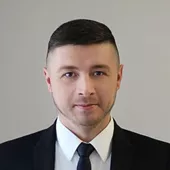This case demonstrates the placement of Straumann Bone Level Tapered (BLT) implants with a diameter of 2.9 mm to address the congenitally missing lateral incisors in maxilla. The patient finished an orthodontic treatment before starting the surgical phase. Whilst patient expectations on white and pink aesthetics were high, both implantation sites had limited bone and soft tissue volume as well as very narrow interdental space. The following clinical case demonstrates that placing Straumann BLT implants with a diameter of 2.9 mm using a full guided surgery approach has ensured a precise implant placement (while avoiding bone augmentation surgery) and helped to optimise the aesthetic outcomes. It is also important to stress that the dental lab specializing on high-end aesthetics was located 300km from the clinic, so it was decided to utilize the digital workflows to the maximum.
Initial situation
A 19-year-old female patient with good hygiene, no medical history, no bad habits, healthy, came to the clinic with a complaint on (congenitally) missing teeth 12 and 22 and improvement of smile aesthetics. The patient had high expectations on the aesthetic outcome and also wanted to limit the surgical interventions in order to minimize any possible surgical trauma and invasiveness. The patient was undergoing an ortho-treatment for malocclusion: neutral occlusion, primary adentia 1.2,1.5,2.2,2.5, persistence 5.5,6.5 and narrowing of the dentition. (Fig 1-4)
Diagnostics and Treatment planning
The CBCT data showed a deficit in the bone volume in the area of the missing 12 and 22 teeth and a very narrow space between the adjacent teeth. The patient desired highly aesthetic outcomes while unwilling to consider any bone grafting procedures. It was decided to utilise the smallest possible diameter implants and use a guided surgery approach with digital planning and fully guided implant placement. This method of surgery allows precise positioning of small-diameter implants - Straumann Bone Level Tapered (BLT) 2.9 mm in situations where the bone volume is critically low. It was also decided to use flap approach to double check the physical bone volume and manipulate with the soft tissues to optimise the soft-tissue outcomes. The template was modeled using coDiagnostiX software and 3D printed. Provisional restorations were also pre-printed and glued to Variobase. (Fig. 5-13)
Surgical procedure
Surgical intervention began with incisions between the central incisors and canines of the respective sides, in order to avoid scarring of tissues in the aesthetically significant area; releasing vertical incisions were not performed (Fig. 15). Then the surgical template was fixed (Fig. 14, 16). At the next step, the implant bed preparation in the area of 12 and 22 teeth was done according to the protocol of the Straumann guided surgery (Fig. 17-18) and the Straumann BLT implants with a diameter of 2.9 mm were installed (Fig. 19-24). Afterwards a bone contour was formed using the SC bone profiler (Fig. 25-28) after which provisional constructions were installed. (Fig. 29-31) Subepithelial connective tissue graft was collected in the palate and fixed in the recipient area to maximise the volume of soft tissues (Fig. 32-34). X-ray control after implantation (Fig. 41)
Prosthetic procedure
After 3 months of uneventful healing, an open tray impression was taken to make permanent restorations for implants and teeth 1.3-2.3 without preparation (Fig. 43-46). The permanent abutments of zirconium dioxide were modeled and fabricated and lithium disilicate restorations were made using the NICE! block material (Fig. 47-58). Fixation of these restorations was carried out according to the adhesive protocol (Fig. 59-60). The soft tissue grafting made it possible to obtain an aesthetic result, leading to an increase in the volume of soft tissues, which was reassuring for the patient. (Fig. 61-66)
Treatment outcomes
In this case, the Straumann BLT implant with a diameter of 2.9 mm was installed with a pronounced deficit in the bone volume, facial wall undercuts and narrow interdental space. Full digital planning and guided implant bed preparation has helped to achieve better precision in compromised sites. The installation of the implants was successful, along with this, the aesthetic parameters of the patient's soft tissues and smile were improved. It was a comprehensive treatment: orthodontics, implant surgery and prosthodontics to maximise the aesthetic outcomes. The patient was pleased with the result achieved: the crowns had a natural appearance and harmoniously fit into the dentition. The healthy state of soft tissues was noted at 6-months follow up (Fig. 70).


